How to Create Effective Facebook Ads That Convert
Rony John14 Aug 2024
Social media advertising is important for businesses looking to expand their reach and connect with potential customers.
Among the diverse social media advertising platforms, Facebook ads stand out as one of the best.
It has completely changed digital marketing by offering businesses powerful tools to effectively reach their target audiences.
Facebook’s advertising platform provides many opportunities for businesses to improve conversions and lead generation.
Through this blog, we will walk you through the ins and outs of Facebook advertising providing valuable insights on improving Facebook Ad performance and creating converting ads on Facebook.

What’s Ahead
What Are Facebook Ads?
Facebook Ads are a form of online advertising where businesses pay to have their promotional content displayed to specific audiences on Facebook.
These ads can appear in users’ News Feeds, Stories, the right-hand column on the desktop site, and even on Instagram and Messenger.
The importance of Facebook Ads lies in their ability to precisely target users based on various factors, allowing businesses to reach their ideal customers efficiently.
The platform offers a comprehensive suite of tools and features for ad creation, audience targeting, and performance tracking.
All these make Facebook Ads an essential component of modern digital marketing strategies.
By using Facebook Ads, businesses can increase brand awareness, drive website traffic, generate leads, and ultimately boost sales.
Improving Facebook Ad performance is crucial for maximizing these benefits and achieving better results from advertising efforts.
Types of Facebook Ads
Facebook offers a variety of ad formats to help businesses engage with their target audiences in diverse and effective ways.
Here are some of the most popular types of Facebook Ads
Image Ads
Image Ads are simple yet powerful, featuring a single photo that grabs attention and delivers a clear message.
These ads are ideal for showcasing products, services, or promotional offers.
High-quality visuals and concise, compelling ad copy are key to making Image Ads successful.
Video Ads
Video Ads provide an engaging way to tell your brand’s story, demonstrate products, or share customer testimonials.
With the ability to capture attention quickly, videos can convey more information and evoke emotions more effectively than static images.
They can appear in users’ News Feeds, Stories, or even as in-stream ads within other videos.
Carousel Ads
Carousel Ads allow businesses to showcase up to ten images or videos within a single ad, each with its link.
This format is perfect for highlighting multiple products, features, or services, or for telling a sequential brand story.
Users can swipe through the carousel cards, making this format interactive and engaging.
Slideshow Ads
Slideshow Ads combine multiple images, text, and sound to create lightweight, video-like ads that load quickly even on slow internet connections.
They are a great alternative to video ads, providing a similar visual storytelling experience without the need for extensive video production.
Collection Ads
Collection Ads feature a primary video or image along with several smaller images below it.
When users click on a Collection Ad, they are taken to a fast-loading, full-screen experience where they can browse and purchase products without leaving the Facebook app.
This format is designed to enhance the mobile shopping experience.
Lead Ads
Lead Ads simplify the process of collecting user information by allowing people to fill out forms directly within the ad without leaving Facebook.
These ads are particularly useful for gathering contact information for newsletters, event registrations, or product inquiries.
The forms are pre-filled with users’ Facebook information, making it easy for them to submit their details.
What is Facebook Ads Manager
Facebook Ads Manager is a comprehensive tool exclusively made for creating, managing, and analyzing Facebook ad campaigns.
It serves as the central hub for all your advertising activities on Facebook, Instagram, Messenger, and the Audience Network.
They help businesses of all sizes efficiently run and optimize their ad campaigns.
The key features and functionalities for improving your Facebook Ad performance include
Campaign Creation
With Ads Manager, you can easily set up new ad campaigns.
You start by choosing your campaign objective, whether it’s to increase brand awareness, drive traffic to your website, generate leads, or boost sales.
The platform guides you through the process, making it easy to align your ads with your business goals.
Ad Creation
Ads Manager provides a variety of ad formats, including image ads, video ads, carousel ads, slideshow ads, and more.
You can upload your creative things, add text, and preview how your ads will look across different placements.
The tool also offers an Ad Creative Hub where you can test different creative elements before launching your campaign.
Audience Targeting
One of the most powerful features of Facebook Ads Manager is its advanced targeting options.
You can target users based on demographics, interests, behaviors, and even life events.
For example, the feature of Custom Audiences allows you to target people who have already interacted with your business.
Budgeting and Bidding
Ads Manager allows you to set your budget and choose your bidding strategy.
You can decide between daily or lifetime budgets and select automatic or manual bidding.
The platform provides recommendations to help you optimize your budget and get the most out of your ad spend.
Performance Tracking and Analytics
Monitoring ad performance is crucial for improving Facebook Ad performance.
Ads Manager offers comprehensive analytics and reporting tools.
You can track key performance indicators and gain data for improving your ad.
Detailed insights help you understand how your ads are performing and where you can make adjustments to optimize results.
A/B Testing
A/B testing also known as split testing, allows you to compare different versions of your ads to see which one performs better.
You can test variables such as headlines, images, ad copy, and calls to action.
This helps in fine-tuning your ads for better engagement and conversions.
Facebook Pixel Integration
The Facebook Pixel is a code piece that you can integrate into your website to track conversions, optimize ad delivery, and build targeted audiences for future advertising campaigns.
Ads Manager easily integrates with Facebook Pixel, allowing you to measure the effectiveness of your ads and gain deeper insights into user behavior on your website.
Dynamic Ads
Dynamic ads automatically present the most relevant products to individuals who have expressed interest on your website, within your app, or across online platforms.
This feature is especially useful for e-commerce businesses looking to retarget potential customers with personalized ads.
Things To Consider While Setting Up Facebook Ads
Setting up Facebook Ads requires careful planning and consideration to ensure your campaigns are effective and achieve your business objectives.
To improve your Facebook Ad performance, you have to pay attention to various key elements.
Here are the key elements that you need to focus on
Setting Clear Goals and Objectives
Setting clear goals is very important for guiding your Facebook ad campaign strategy and measuring its success.
Goals provide direction and help you stay focused on goals that you want to achieve through the ad.
Facebook offers a variety of campaign objectives that cater to different business needs and stages of the customer journey.
These objectives are grouped into three main categories:
Awareness
Objectives that create an interest in your product or service. These include:
- Brand Awareness: Making more people aware of your business or product, brand, or service.
- Reach: Showing your ad to the maximum number of people.
Consideration
Objectives that encourage people to start considering your business and look for more information. These include:
- Traffic: Driving traffic to your website, app, or Facebook event.
- Engagement: Increasing post engagement, Page likes, event responses, or offer claims.
- App Installs: Encouraging people to install your app.
- Video Views: Promoting videos to raise awareness about your brand.
- Lead Generation: Collecting leads for your business.
- Messages: Suggest and invite people to message your business.
Conversion
Objectives that motivate potential customers to purchase or use your product or service. These include:
- Conversions: Getting valuable actions like purchases or sign-ups on your website, app, or Messenger.
- Catalog Sales: Showing products from your catalog to generate sales.
- Store Traffic: Driving traffic to your physical stores.
For example, if you are looking to increase brand awareness, you can choose the Brand Awareness or Reach objective.
While setting goals, follow the SMART framework: Specific, Measurable, Achievable, Relevant, and Time-bound.
For example, instead of setting an unclear goal like “increase website traffic,” a SMART goal would be “increase website traffic by 30% in the next four months.”
By using this strategy, you can make your goals clear and attainable, which will lay a foundation for improving Facebook Ad performance.
Identifying Your Target Audience
Understanding and targeting the right audience is essential for creating effective Facebook Ads for your business.
You can use Facebook’s advanced targeting option like Facebook Audience Insights to get data about your potential customers.
Facebook Audience Insights provides detailed information about your target audience, including demographics, interests, behaviors, and location.
This data helps you understand your audience better and tailor your ads to their preferences.
You may utilize Facebook’s versatile audience segmentation feature to optimize your ad campaigns to reach your target audience.
Audience Segmentation
Custom Audiences
Custom Audiences enable you to reach users who have previously interacted with your business.
This interaction could include visiting your website, engaging with your app, or being part of your customer email list.
By focusing on these users, make your ads for the specific interests and needs, increasing the chances of conversion.
Benefits
- Re-engage previous customers.
- Target users who have shown interest in your brand’s products or services.
- Increase ad relevance and effectiveness.
How to Create
- Go to the ‘Audiences’ section within your Facebook Ads Manager.
- From there, click on ‘Create Audience’ and choose ‘Custom Audience’.
- Pick out the source of your audience data (e.g., website traffic, customer file, app activity).
- Follow the directions to upload your data or set up tracking.
Lookalike Audiences
Lookalike Audiences help you reach new people who are similar to your existing customers.
Facebook uses data from your Custom Audiences to find users with similar characteristics and behaviors.
This method is particularly effective for expanding your reach to potential customers who are likely to be interested in your products or services.
Benefits:
- Discover new customers who resemble your best existing customers.
- Expand your audience base with precision.
- Increase the potential for higher engagement and conversion rates.
How to Create
- In the Facebook Ads Manager, go to the ‘Audiences’ section
- Proceed to click on ‘Create Audience’ and choose ‘Lookalike Audience’.
- Select your source audience (e.g., a Custom Audience or a Page followers list).
- Choose the country or region and audience size.
- Click ‘Create Audience’.
Saved Audiences
Saved Audiences allow you to save and reuse specific audience settings for future campaigns.
This feature is useful for targeting demographics, interests, behaviors, and locations that you frequently use.
By saving these settings, you can quickly apply them to new campaigns, ensuring consistency and efficiency.
Benefits
- Save time by reusing audience settings.
- Maintain consistency across different campaigns.
- Easily refine and update audience parameters.
How to Create
- As explained for all the other segments, go to the ‘Audiences’ section in your Facebook Ads Manager.
- Select the ‘Saved Audience’ from the ‘Create Audience’ dropdown menu.
- Set your audience parameters, such as location, age, gender, interests, and behaviors.
- Click ‘Create Audience’ to save your settings.
Creating Compelling Ad Creatives
Before you start creating your ad creatives, try to understand who your audience is.
You have to define your target demographics, interests, behaviors, and pain points to create good and effective ad creatives.
This understanding will also guide you in choosing the tone, visuals, and messaging of your ads to resonate effectively with your audience.
To create compelling ad creatives that stand out and deliver results, you have to focus on:
Visuals
Visuals are one of the important aspects of effective Facebook ads.
Always use high-resolution images or videos that are visually appealing and relevant to your message.
You can consider the following tips:
- Use bright colors, bold imagery, or motion to capture users’ attention as they scroll through their feeds.
- Highlight your products or services in action to demonstrate their value and benefits to potential customers.
- Make sure that your visuals match your brand’s style and identity to build recognition and trust among your audience.
Ad Copy
In addition to visuals, compelling ad copy is essential for conveying your message and encouraging action.
To write a persuasive ad copy, you have to:
- Start with a strong headline or opening sentence that addresses a pain point or captures curiosity.
- Communicate how your product or service addresses a problem or meets a need for your audience.
- Keep your copy concise and easy to understand. Focus on benefits rather than features.
Call-to-Action (CTA)
You have to make effective and strong CTAs for your Ad copy.
Include CTAs that encourage and direct users to take the next step, whether it is to visit your website, make a purchase, or sign up for an offer.
Budgeting and Bidding Strategies
Setting an effective budget and bidding strategy is important for improving Facebook ad performance.
So it is essential to allocate your budget based on your campaign objectives, audience size, and competitive landscape.
Monitor your spending and adjust your budget to maximize return on investment (ROI).
You can also choose between automatic or manual bidding strategies depending on your campaign goals and desired outcomes.
Automatic bidding allows Facebook to optimize your bids for the best results, while manual bidding gives you more control over your bid amounts.
Regularly check your ad performance metrics to optimize your bidding strategies, improve ad relevance, and reduce costs per acquisition.
Adjust your bids based on the performance data to ensure efficient use of your budget.
Monitoring and Analyzing Performance
Continuously monitor your ad performance and make necessary adjustments as required.
You can track key performance indicators to measure the success of your campaigns.
The Key Performance Indicators (KPIs) are:
- Click-Through Rate (CTR): Measures the percentage of users who click on your ad after seeing it.
- Conversion Rate: Monitors the percentage of users who complete a specific action, such as making a purchase or signing up.
- Cost Per Click (CPC): This shows the average cost you pay for each click on your ad.
- Return on Ad Spend (ROAS): Estimates the revenue generated per dollar spent on ads.
- Impressions: Indicates how often your ad is displayed.
- Frequency: Tells you how often each user sees your ad on average.
- Cost Per Acquisition (CPA): Measures the cost to acquire a new customer through your ad campaigns.
Make use of Facebook Ads Manager analytics to gain insights into your ad performance.
Analyze data on audience behavior, ad engagement, and conversion rates to make informed decisions and continuously improve your ad campaigns.
Conclusion
Improving Facebook ad performance requires a strategic approach that combines effective targeting, compelling creatives, and data-driven optimization.
By understanding all these aspects, businesses can improve their ad performance and achieve meaningful results.
Keep experimenting, analyzing your results, and refining your approach to get the maximum results that you desire!
Would you like to read more about social media ads? Check out our latest blogs on various topics!
- Instagram Ads: Best Practices for High Engagement
- LinkedIn Ads: How to Reach Professionals Efficiently
- Twitter Ads: How to Craft Engaging Promoted Tweets
- Pinterest Ads: Everything You Need To Know
- Benefits of Using Meta Ads to Advertise Your Business
- Ultimate Guide To Social Media Ads
Latest Post

5 Do’s and Don’ts When It Comes To SEO
 18 Sep 2023
Readmore
18 Sep 2023
Readmore
Want to learn more about the digital marketing service we provide?
Contact Us to Get Started!




